by Christine Sine
Last week I held a zoom conversation with participants in the Spirituality of Gardening online course. I thoroughly enjoy these calls which give all of us an opportunity to review the sessions and learn from each other. This week someone shared about the significance of the dogwood tree. I knew that many plants have been given significance in the Biblical story but must confess that the dogwood is one that I have not previously researched. Not only did the story delight me but it led me on a journey of discovery for other plants that have been given significance in God’s story by missionaries, monks and other followers of Christ who preceded us and I thought that I would share some of these with you.
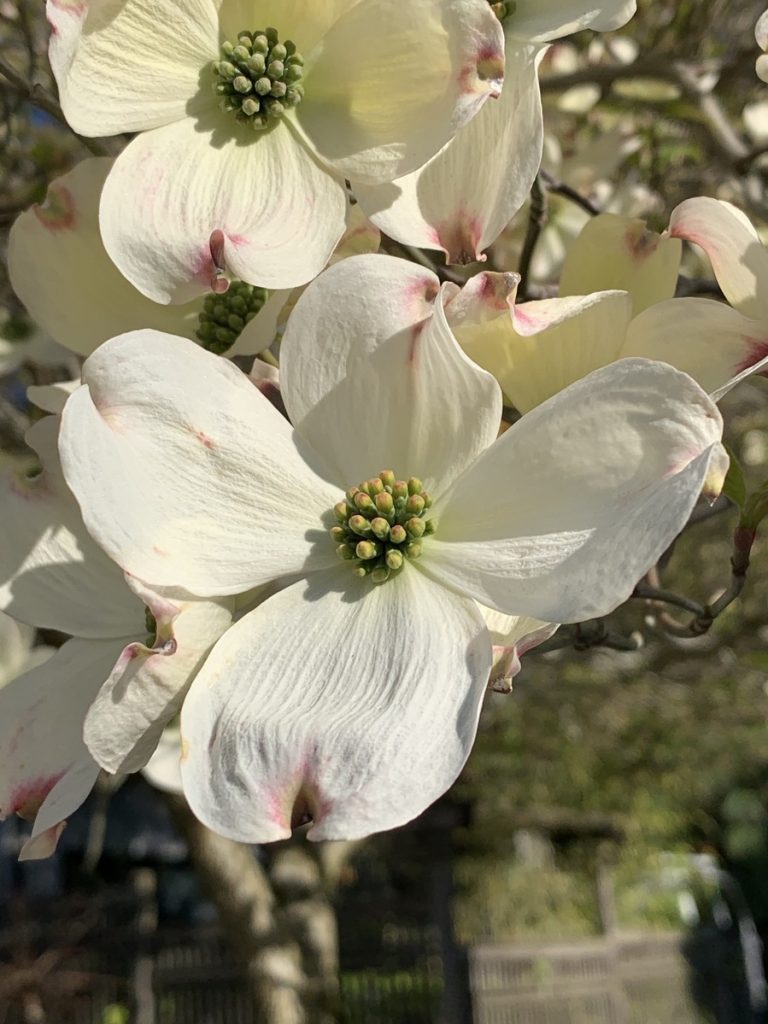
Dogwood flowers
Dogwood
The legend surrounding the symbolic meaning of a dogwood tree is intrinsically linked to Christianity. It is said that the wood of the dogwood tree is the hardest and that it was chosen to be used in the cross on which Jesus Christ was crucified. Although there are no direct accounts that this is so, it is known that dogwood grew in the areas surrounding Jerusalem during this time period, and it is entirely likely that this wood was used.
Growth of the Dogwood Tree
The legend of the tree continues that because it was used as part of the cross, God cursed the dogwood forever after. Due to this supposed curse, the growth pattern of the dogwood tree is said to be stunted and twisted. Once again, there is no real historic fact to back this up, and there are no notes that show whether or not that the dogwood tree used to grow taller before the crucifixion. However, the tree does now have a growth pattern that is very twisted and short.
Dogwood Flowers
The legend of the dogwood tree also extends to its flowers. Typically, the blossoms are four petaled with two long petals and two short petals, forming the shape of the sign of the cross. The flowers are typically white or pink with dark edging at the tips meant to signify the nails of the cross. The center of the blossom can be described as a crown of thorns and is also typically of a darker color than the rest of the blossom.
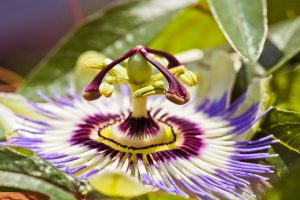
Passion flower
The Passion Flower
My favorite representation of the story of Christ’s passion is the passion flower, native to South America, but very common in Australia. It was adopted by Spanish missionaries in the 15th and 16th centuries as a teaching tool. Every part of the flower’s bloom became a symbol of a different aspect of Christ’s crucifixion. The vine’s supporting tendrils represented the whips used to scourge Christ, and the flower’s radial filaments, the crown of thorns. The stigmata and anthers represented the nails and wounds. Even the blue and white colors of most passion flowers were symbolic of heaven and purity.
Symbols of the Trinity
My second area of research was into images of the Trinity.
The most familiar of such symbols is that of the Irish shamrock, Oxalis acetosella, with its three-lobed leaves, which St. Patrick supposedly pointed out to the Irish as a symbol of the true Trinitarian God of whom he preached to them, and in whose name he blessed nature to sanctify it.
There are lots of other plants that bear the Trinity symbolism, many of them with three-petaled flowers that represented Father, Son and Holy Spirit.
My favourite is Trillium grandiflorum, a native of north-eastern and north-western U.S. known as the Trillium lily because it is said to symbolize the Trinity – God is One in three – Father, Son and Holy Spirit.
Other plants bearing the Trinity symbolism, from their three-petaled flowers. In Europe, the wild pansy, or johnny-jump-up, viola tricolor, was also widely known as Trinity Flower – for the three colors of each of its flowers, from which familiar present-day larger pansies blooms have been bred with one or two colors usually dominant.
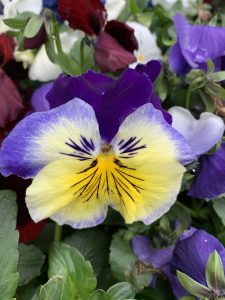
hybrid pansy
An interesting aspect of bred pansy strains of a dominant color is that the other two colors are always preserved at the centers of the blooms. Thus, pansies of yellow dominance may be seen to symbolize the glory of the heavenly Father; purple the sorrows of the incarnate Son; and white the light of the empowering Holy Spirit – with the other colors in each instance always retained at the center, serving to remind us that whenever one of the Persons of the Trinity is present the others are present also, in the unity of the Godhead of love.
Aloe Vera – a Different Trinitarian Symbol
I was amazed to discover that Aloe vera, that great healing plant, also known as a miracle plant, burn plant, first aid plant, lily of the desert, jelly leek, plant of life and plant of immortality because of its many uses can also be seen as a symbol of the Trinity. Its Trinity symbolism refers to the characteristic successive emergence of new foliage spears from the base of young plants in groups of three – first two beginning spears, and then a third one between them – reflecting the emergence of the Holy Spirit from the Father and the Son in the interior of the Trinity.
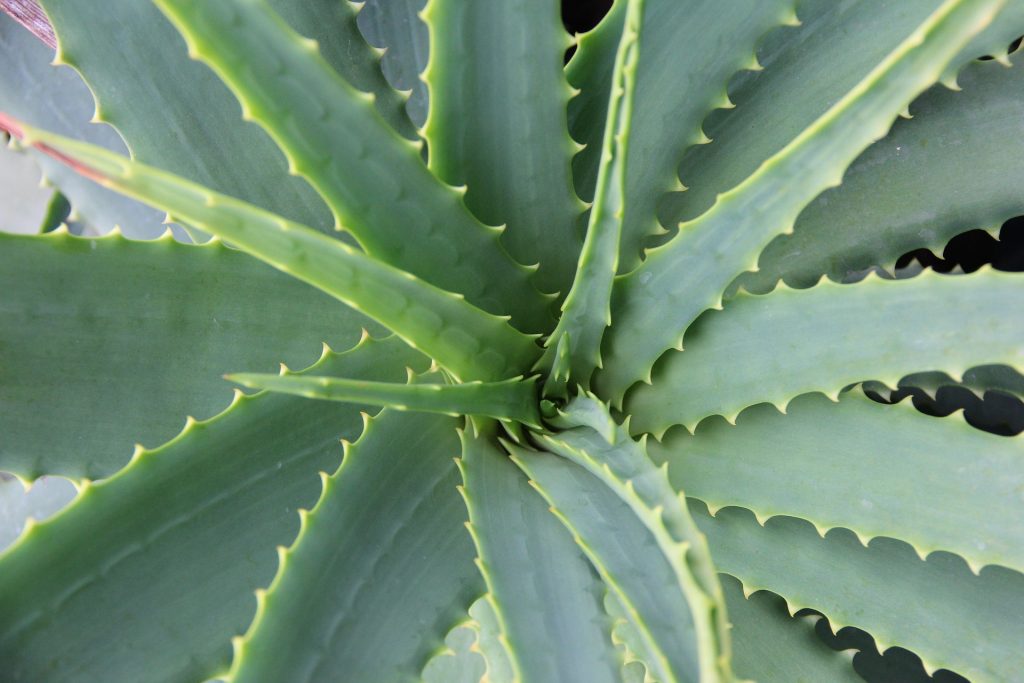
Aloe vera
There are many other plants that have Biblical significance – some of them because they are mentioned in the Bible, others because they have been associated with various aspects of the Biblical story, and now I find that every time I look at a flower or the arrangement of new leaves on a plant that I am looking for that trinitarian pattern. How about you? When was the last time that you looked intentionally at a plant with the hope of once more finding the imprint of our Triune God?

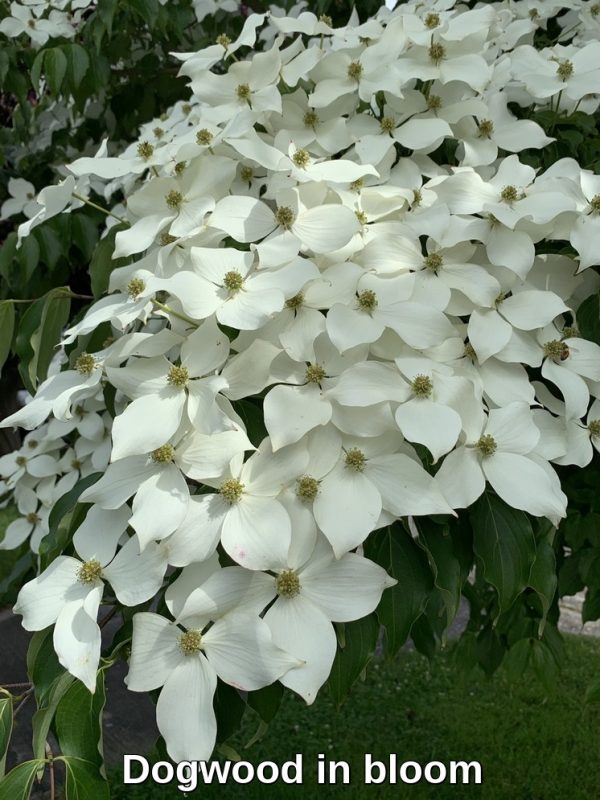
4 comments
The version of the dogwood story that I have heard [and much prefer] is the the dogwood was so heartbroken at what his wood had been used for that he asked God to change the growth pattern so that the wood could never be used in such a cruel way again. God took pity on the tree, and did so, and as a gift made the flowers a beautiful remembrance of the crucifixion and God’s love.
It is fascinating looking at all the variations to these stories that have been told through the centuries. I grew up believing it was cedar or cypress. To be honest I had not heard of dogwoods until I came to the U.S.
The dogwood tree is not mentioned in the Bible nor is it a native tree in Israel..
Thanks Patricia, it may not be native to Palestine but evidently, according to what I read, it did grow around Jerusalem in the time of Christ.